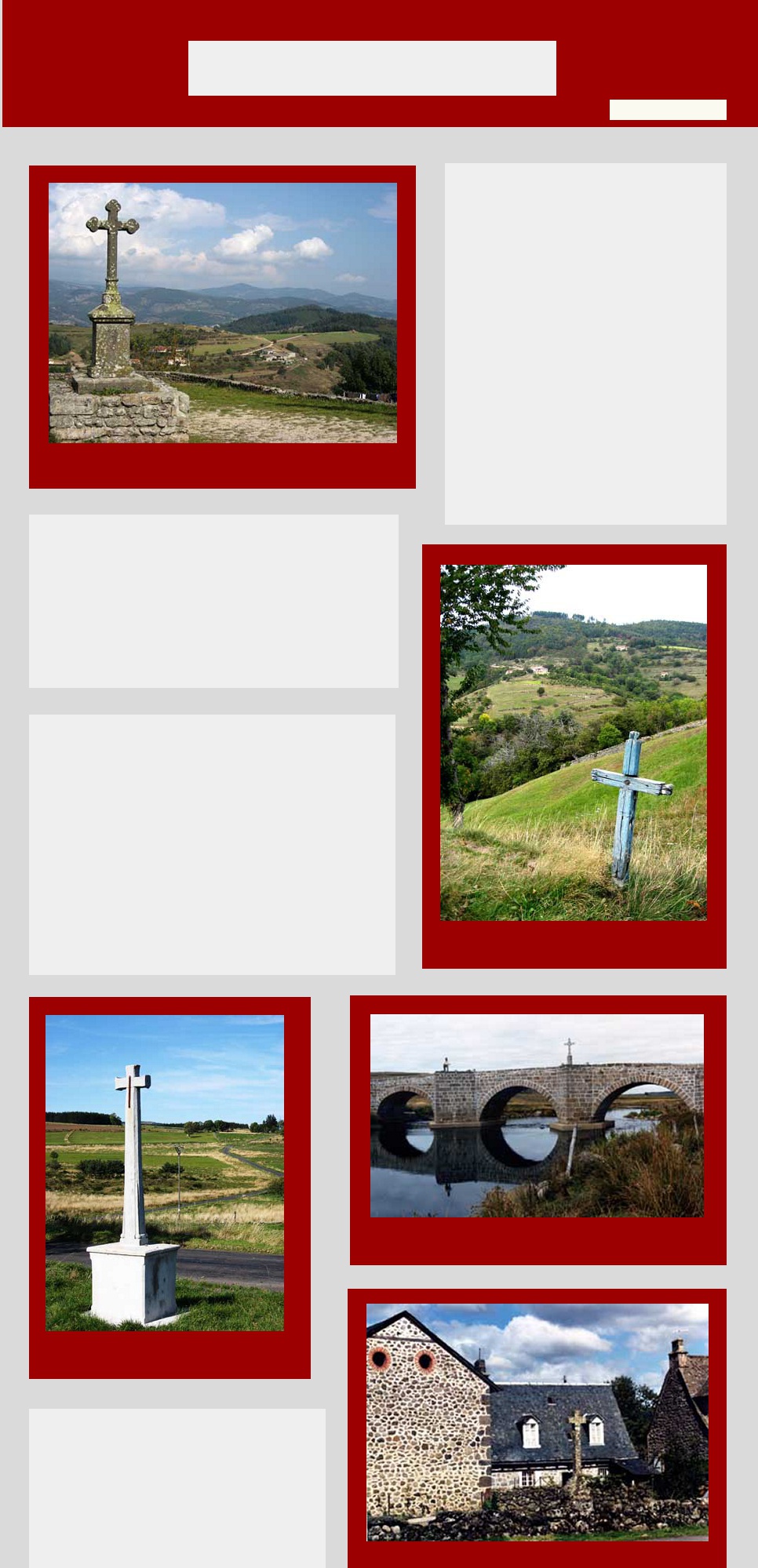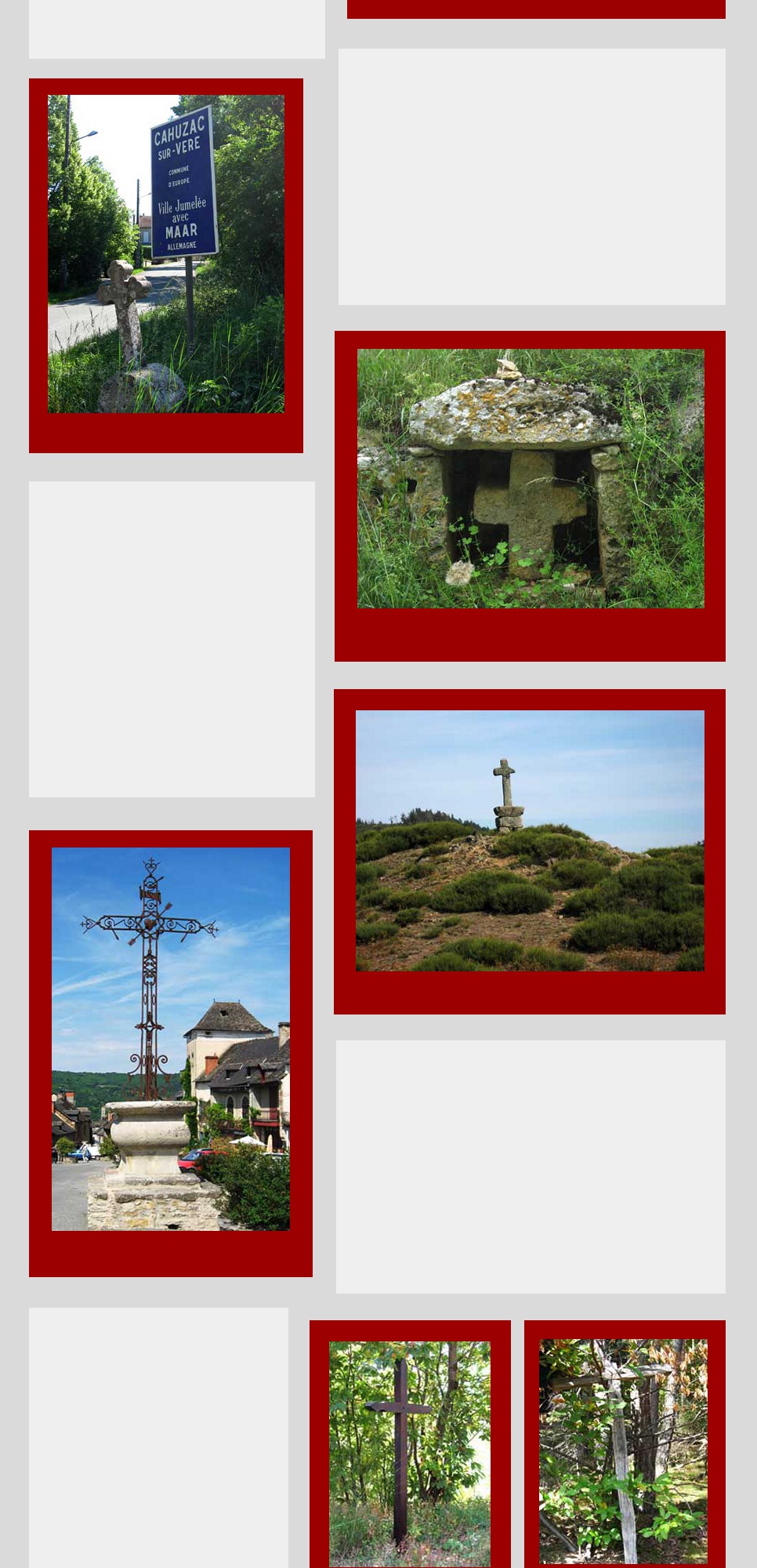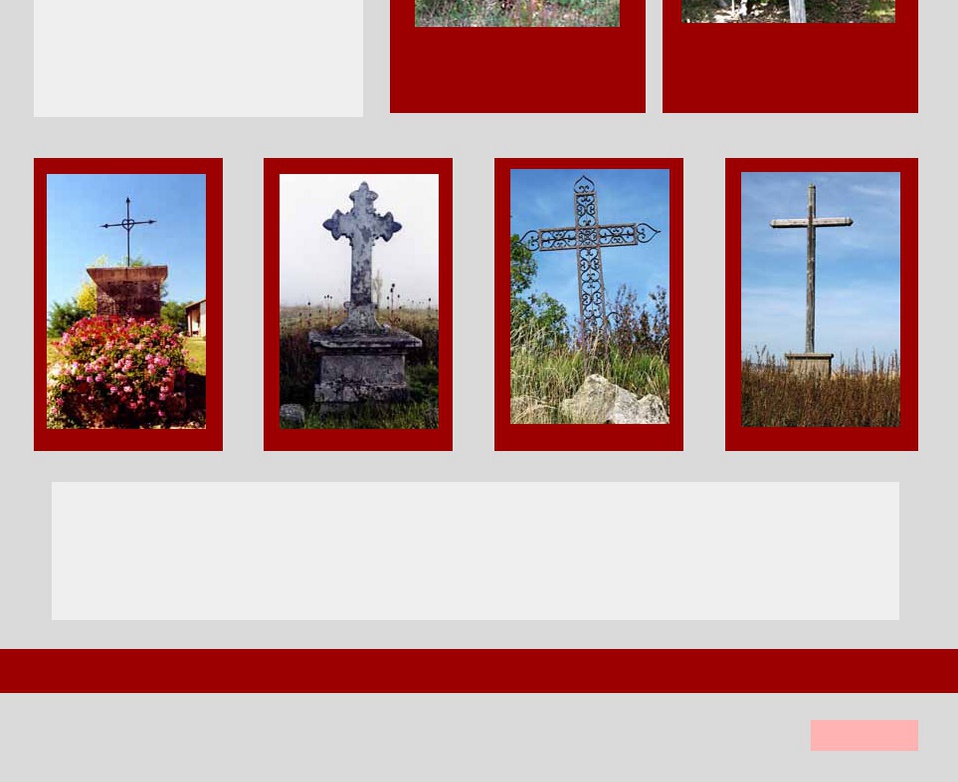



Wayside Crosses
in the Countryside
About wayside crosses
When walking in the French countryside it won't be
long before you become aware of the wayside
crosses, or calvaires. These crosses are so much part
of the landscape that, only recently, have they been
recognised as important items of the patrimoine, or
national heritage. Now, many départements have
begun projects to research and record them before
they disappear. This can be a considerable task as,
for example, in the Cantal where about 3000 crosses
have been recorded.
The destructive process began some time ago with
many crosses destroyed during the Revolution of
1789. Over recent years there have been more
modern threats and without legal recognition and
protection the damage will be a real catastrophe.
Many crosses have been damaged in traffic
accidents, torn down to make way for road
widening or new residential development. Others
have been irrevocably eroded by pollution or
neglected to the point when their significance can
no longer be recognised.
Where are they found?
The tradition of erecting crosses may date from a time before
Christianity when the Greeks and the Romans used statues of
Hermes (from herma, "stone pile") or Mercury to mark a path and
watch over travellers.
In recent surveys recently some have been identified as being from
the Carolingian period, ie 8th-9th century. Many more have being
dated between the 15th and 19th centuries. Anything after that is
recent and indeed new crosses continue to appear, though
sometimes they are replacing old ones.
Crosses are found alongside roads and pathways in open or wooded
country, often far from towns or habitation and in very isolated places.
They are frequently found at crossroads, not just of major roads but
also of countryside pathways.
They may be constructed on bridges or stone walls or incorporated
into natural features such as large rock. Often they are located at
the entry to towns and villages, in the proximity of châteaux or
manor houses and sometimes they are implanted to mark the four
corners of a parish or property boundary.
They also mark geographical features, being placed on hillsides or at
the top of knolls and the summit of mountains. A spring or fountain
will usually be topped with a cross.
Why were they erected ?
All crosses have a very precise significance.
Sometimes this is religious, with many people having
believed that to plant a cross was an act of devotion.
These crosses provide travellers and local people with
a reminder of their faith and a place to pray. Those
stopping in front of a cross may pray for indulgences,
often very precise prayers.
Some places, such as springs, have been sacred
since long before Christianity and many of these are
marked with a cross.
Aside from religious connections, crosses have been erected for a host of
other reasons: sometimes as a witness to events in local history; they
may relate to legends or popular beliefs; perhaps they commemorate a
family event; others have been erected at the scene of a tragedy, often an
accident.
We are familiar with simple crosses erected in recent times at the
scene of a traffic accident. The old crosses in the countryside often
commemorate tragedies more in keeping with their times. From the
17th to 19th century accidents associated with timber felling and
collection were frequent occurrences so there are many crosses have
been erected in the woods by workmates or family. Some of these are
incorporated into natural features or the local material has been
fashioned into a distinctive cross.
The Revolution and centuries of warfare left their mark. Some crosses
stand on the site of a wartime tragedy. Others may simply be where
someone was buried.
Often, a cross has a happy or uplifting purpose.
Planted at the entry to a village it tells passers by that
their entry or departure from the village will be
protected. This cross may also be seeking divine
protection for the village. At a domestic level, a cross
erected in the gable of a roof or above an entry gate is
intended to protect the household.
Alongside a pathway, a cross may indicate a
direction. During the middle ages they were erected
to guide pilgrims on their way and perhaps invite them
to stop for a prayer or two. Along the Compostella
pilgrim route these crosses are often engraved with a
cockle shell, the symbol of St James.
Others have an administrative purpose - to advise when
you are leaving a parish or entering someone's estate.
Then there are crosses that seem to owe their location
simply to a desire to erect a cross at any significant
spot. A crossroads, the high point of a plateau, at the
top of a climb, on the summit of a mountain.
Materials and Form
Many crosses are true works of art.
The artisans were generally local people, many anomyous but sometimes they have left a name.
The artisans were generally local people, many anomyous but sometimes they have left a name.
Each district tended to develop its own style and designs. Materials
usually reflect what was readily available, stone or wood being the most
commonly used materials. Sometimes these are finely carved and
designed while other times the material may be left virtually in a natural
state. In more recent times, concrete is used. There are also very
attractive wrought iron crosses.
For protection many wood crosses were placed within a shrine or when set
on a post, covered by a simple roof to better weather the elements.
The simplest of crosses will simply be two pieces
of timber, joined at a central point. As the designs
are refined the end points will be shaped and
carved.
With further refinement, there are Greek, Latin and
Celtic crosses on which are carved the Christ, the
Virgin and the Saints.
Other symbolism includes little crosses, hearts,
crowns, the sun and moon, a solar calendar, a
cock, a lamb, the fleur de lis, heads, stars and the
baton and cockle shell of the pilgrim.
Some carry inscriptions which may indicate the
initials of the artisan or the date of erection.
Sometimes the intention of the cross is conveyed in
an inscription. But more often the surface will be
worn and there will be little to indicate who or what
significance lies behind the erection of a cross in this
particular place.
A cross is, firstly, a symbol of Christianity.
But, in the case of wayside crosses, the symbolism may be very different and more closely associated with
the history, remembrances and legends of places. They have now come to be recognised as striking,
vernacular monuments demonstrating the design and decorative techniques of their times and carrying an
high significance in the local patrimoine
Return to Top
On a high point lookinmg towards the Haut Vivarais
Beside a pathway near St Agrève
On a bridge in the Aubrac
At a crossroads in the Vivarais
In the wall of a manor house near Aris
Entering the village of Cahuzac-sur-Vere
Embedded in a stone wall near Cordes -sur-Ciel
A windy hillside near Mt Mézenc
In the village square of Najac
In the forest, a new cross ....
.... replaces the old, which is
discarded nearby
Explore more FRANCE
Visit ITALY
Visit SPAIN/PORTUGAL
Explore on MAPS
Return to HOME PAGE
Explore PHOTO GALLERIES
View pictures of